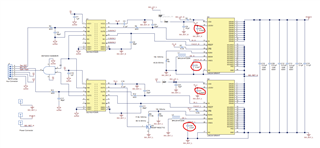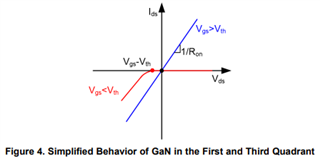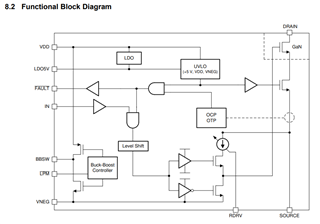Other Parts Discussed in Thread: LMG34XX-BB-EVM, , LMG3411R050
Hello,
I have set up my power board to use the above half-bridge demonstration board for a PhD project. When I apply a 5V power supply to the demo board, the LED illuminates to indicate there is either and undervoltage lockout, overcurrent or overtemperature event. First of all, I am not actually switching any power - which probably rules out both the overcurrent and overtemperature events since no power dissipation is occurs.
I have measured the voltage at a test pin before it is given to the demonstration board and this measures approximately 5.3V. I'm not entirely sure why this voltage is higher than that of the power supply.
But I am absolutely perplexed as to why the LED's are illuminating - first of all, if I leave the 12V pin open, because I am only using the 5V supply method for the daughterboard, would this cause the LED's to illuminate since one of the "bias supplies" are detected to be zero? Surely if we are using the 5V supply method, we do not care about what the 12V signal is, whether that be 12V or 0V, because we are not using it - but I am not entirely sure under exactly which circumstances does the demo board output an active low signal?
Is there anything else I am missing that could be causing the LED's to illuminate? The voltage given to the daughterboard is more than required by it - 5.3V as opposed to 5V, so again UVLO does not make sense, but neither does overcurrent or overtemperature since there is no voltage or current applied to the power circuit.
Best regards,
Joel





